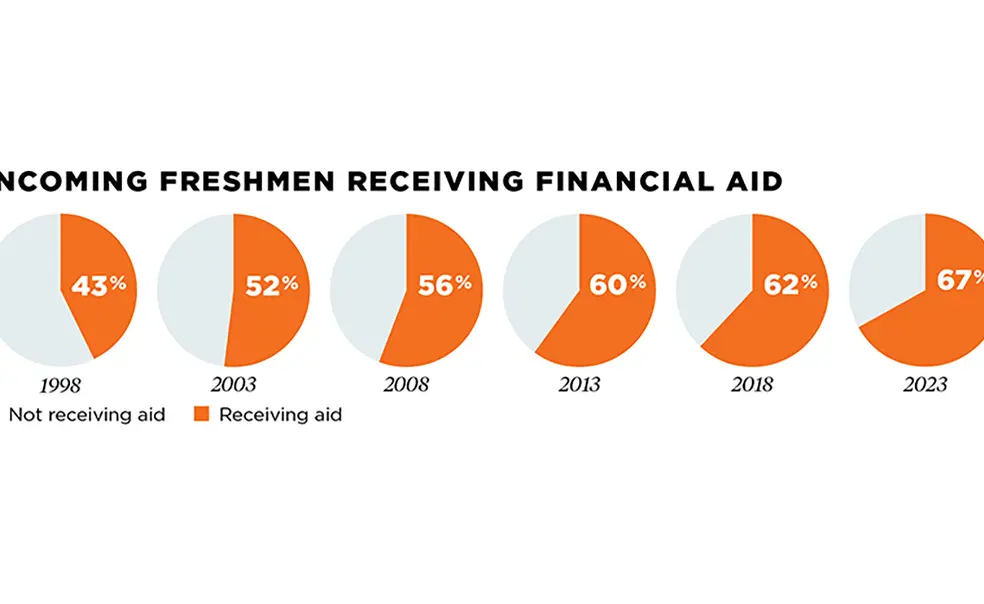Trustees Endorse Admissions Targets for Socioeconomic Diversity
Following a trustee committee’s review of Princeton admission policies, the University announced new targets for socioeconomic diversity in the undergraduate student body, with a goal to recruit classes in which at least 70% of students are eligible for need-based aid and 22% are eligible for federal Pell Grants.
In Princeton’s Class of 2027, which arrived in the fall, 67% of students were eligible for the University’s financial aid and 22% were eligible for Pell Grants, according to University releases.
The trustees also endorsed continuing to add undergraduate transfers through the existing transfer program, which has primarily enrolled community college students and U.S. military veterans. The program was reinstated in 2018 and previously announced plans to expand its enrollment to between 25 and 35 students each year.
The Ad Hoc Committee on Undergraduate Admission Policy, chaired by trustee Jose Alvarez ’85, was convened following last summer’s U.S. Supreme Court decisions that prohibited the use of race as a factor in college admission decisions. The 15-member committee completed its report in mid-March, and the full board approved its recommendations soon after.
In its review of athletic recruiting, the committee emphasized that recruited athletes should continue to be representative of the overall student body, academically and socioeconomically.
The committee also studied legacy admission but did not recommend changes. According to the report, the legacy preference “recognizes the University’s special bond with its alumni.” The majority of legacy applicants — about 70%, the report said — are denied admission, and legacy preference “functions as a tiebreaker between equally well-qualified applicants in limited instances,” benefitting fewer than 30 students per year.
The committee supported retaining the legacy preference while monitoring its effects “to ensure that it is fully consistent with the University’s admissions philosophy, including its commitments to academic excellence and socioeconomic diversity.”












1 Response
Michael A. Hartman ’62
1 Year AgoAdmissions Targets
I am concerned about “socioeconomic” status being an apparent overriding objective. This offers a very soft criteria with which to blend a class. It is too broad and frankly meaningless.
Academic and extra-curricular performance should be the guide. In my opinion, they are a much greater guide to future endeavor and development.